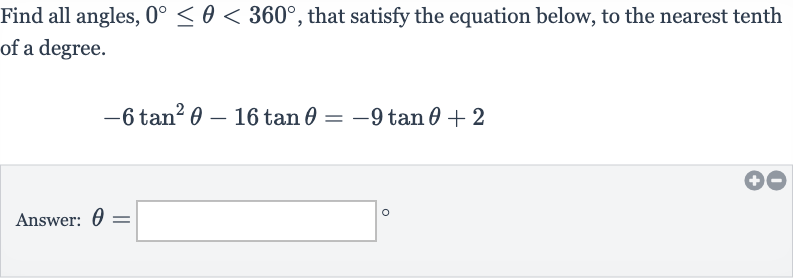Full solution
Q. Find all angles, , that satisfy the equation below, to the nearest tenth of a degree.Answer:
- Rewrite Equation: First, we need to rewrite the given equation in a standard quadratic form by moving all terms to one side of the equation.This simplifies to:
- Factor Quadratic: Next, we attempt to factor the quadratic equation, if possible. If not, we will use the quadratic formula to find the solutions for . Factoring the quadratic equation gives us:
- Solve for : Now, we set each factor equal to zero and solve for . First factor: Second factor:
- Find Angles: We need to find the angles that correspond to and within the interval 0^\circ \leq \theta < 360^\circ. For , the angles are in the second and fourth quadrants. We find the reference angle by taking the of and then subtract from for the second quadrant and add to for the fourth quadrant. Reference angle = Second quadrant angle = Fourth quadrant angle =
- Reference Angles: For , the angles are also in the second and fourth quadrants. We find the reference angle by taking the and then subtract from for the second quadrant and add to for the fourth quadrant.Reference angle = Second quadrant angle = Fourth quadrant angle =
- Final Angles: We now have four angles that satisfy the original equation: , , , and . These are the angles to the nearest tenth of a degree.
More problems from Csc, sec, and cot of special angles
QuestionGet tutor help
QuestionGet tutor help
QuestionGet tutor help
QuestionGet tutor help
QuestionGet tutor help
QuestionGet tutor help
Question
. Find the value of in degrees.Write your answer in simplified, rationalized form. Do not round.____
Get tutor helpQuestionGet tutor help

